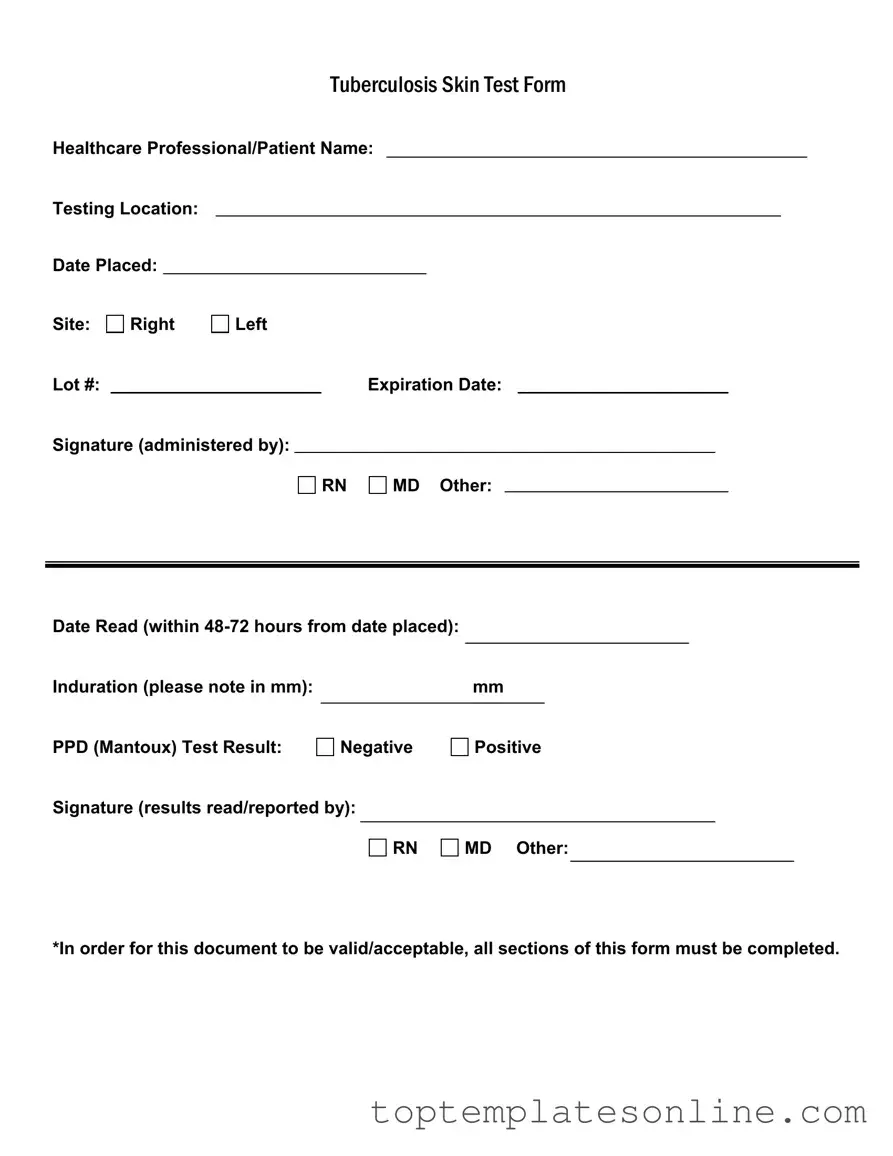The Tuberculosis (TB) Skin Test Form is an essential document used in the healthcare setting to record critical information regarding TB testing. This form captures key details, starting with the names of both the healthcare professional administering the test and the patient receiving it. It includes the testing location and the date when the test was placed, ensuring that all relevant timelines are documented accurately. Additionally, the form specifies the site of the test on the patient's body, allowing for precise tracking of the procedure. Each form features a unique lot number and an expiration date for the testing material, which are crucial for maintaining the integrity of the test results. The signature of the administering professional, whether a registered nurse (RN), medical doctor (MD), or another qualified individual, is required to validate the test. Following the placement of the test, the form also prompts for the date the results are read, which must occur within 48 to 72 hours. Induration, measured in millimeters, is noted to assess the body's reaction to the test. Finally, the form concludes with the PPD (Mantoux) test result, which can be either negative or positive, and requires another signature to confirm that the results have been accurately read and reported. For the document to be considered valid and acceptable, it is imperative that all sections are completed thoroughly.
